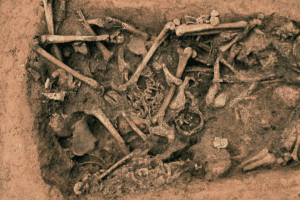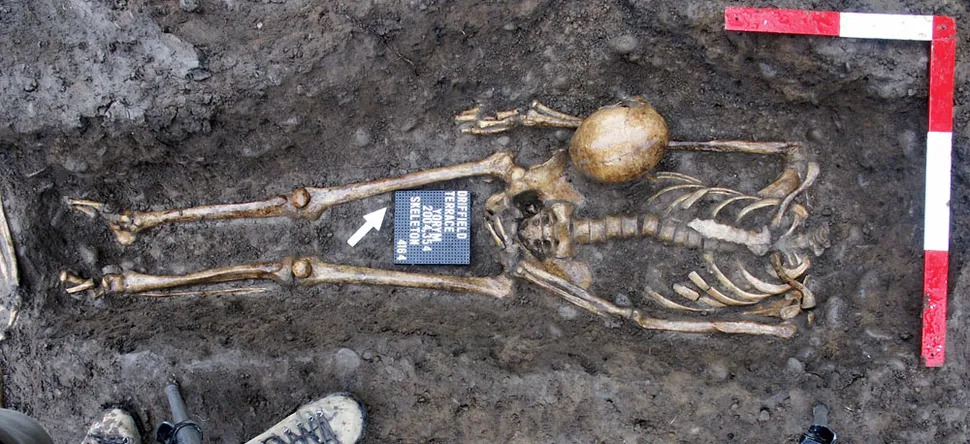
Minolta DSC
In the quiet northern English city of York, cobbled streets wind past quaint tea shops and an imposing cathedral. As tourists wander around the city, they are largely oblivious to what lies beneath their feet. But archaeologists know better. You see, York’s soil hides secrets—bloody, brutal secrets that involve headless gladiators buried deep underground.
This horrifying sight came to light when construction workers at Driffield Terrace stumbled onto a number of graves. But these were no ordinary burials. Instead, this was the final resting place of more than 80 men from nearly 2,000 years ago. The surprising and most horrifying thing about it? Their heads were not where you would expect them to be.
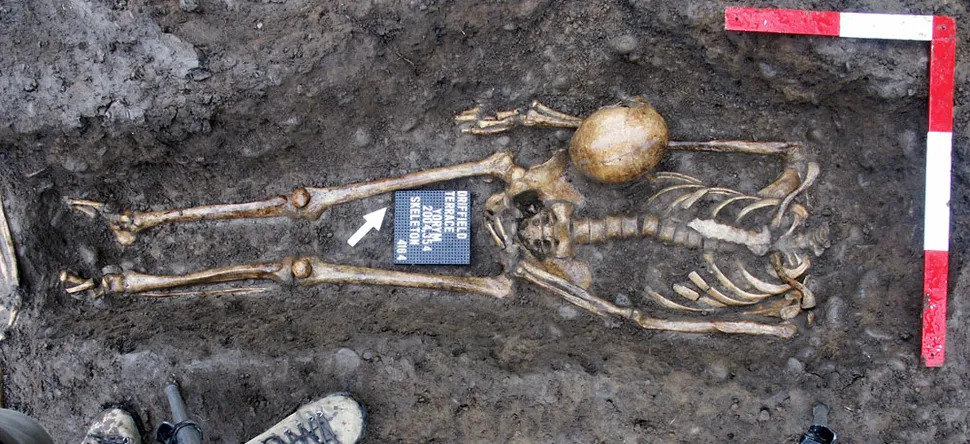
Digging Up the Dead
For archaeologists, excavating graves offers a valuable opportunity to learn as much as possible about the person buried there. It’s possible to unearth more information than you would ever think possible, but even experienced archaeologists would stop in their tracks if they excavated a headless skeleton.
Initially, the archaeologists believed they’d uncovered a Roman cemetery, which gave them a wonderful chance to uncover more secrets of Roman graves. This is nothing unusual for a city that was once known as Eboracum, a military stronghold of the Roman Empire. Yet, upon closer inspection of the burials, it was clear that this discovery was something different. It was not your usual type of York archaeological discovery.
But the skeletons weren’t families or children. You didn’t have the normal mix of ages that you would see in a cemetery. Instead, these bodies were all young men. It was clear that they were strong and muscular, with many in their twenties and thirties. But most startling of all was that almost all of them had been decapitated.
But even more bizarre was that their skulls were still with them in the grave, just not where you would expect them to be. Yes, they were buried with the bodies—but often in strange positions. Some had their skull tucked between their legs. Others had their skull placed at their feet. A few even had their skull placed on their chest.
Exactly why their skulls were placed in different areas in the graves is a real mystery. The only consistent thing was the fact that the skull was not in its correct place. Was this an example of Roman execution methods? Was it some unusual ritual?
The Bones Show One Thing: Violence
The answer was in the bones. Many of the bodies exhibited deep cut marks running across their vertebrae. This was clear evidence of sharp blades cutting and slicing into flesh. Some skeletons had multiple wounds, as if these Roman executioners had needed several attempts to finish the job. Others showed signs of trauma to the skull—blows to the head before or after death.
Also, these weren’t ceremonial burials. These men all met their death by sword, axe, or blade, carried out with force. In many cases, the executioner struck from behind, severing the head in a single brutal swing, as shown by clean cuts indicating the job was completed in one move.
It was violent. It was brutal. It was the Roman way. These burials were not your average Roman. These were ancient gladiator remains and provide a horrific insight into a bloody part of Roman Britain history.
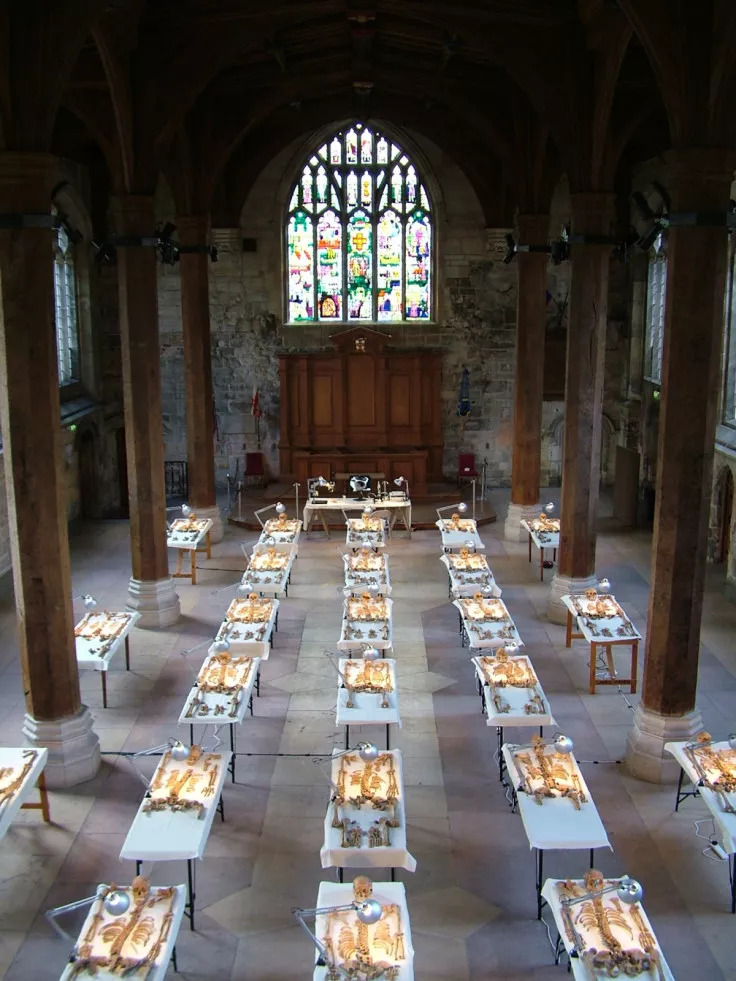
Headless Gladiators of York
This is one of the fascinating things about archaeology. While we don’t know their name, we can still learn a great deal about them thanks to studying their bones and understanding their DNA and isotopes in their teeth.
What it showed was that some were from Britain while others came from the Mediterranean, the Middle East, and even North Africa. Basically, from every corner of the Roman Empire, and yet they all managed to make their way to York before meeting a gruesome end.
But it wasn’t just the science that told the story of who these people were. Studying their bones indicated they were all stronger on their right side. Why is that important? It’s known from historical sources that individuals trained to fight from their teens would, understandably, build stronger muscles on one side, and the right side was the most common.
These burials were gladiators. The rockstars of the era who would meet a brutal and bloody end.
The Importance of Blood in the Arena
If you were of the impression that the idea of gladiators fighting to entertain the crowds was something limited to Rome itself, then you would be wrong. When it came to a Roman amphitheatre Britain had more than one, though no trace remains in York today. In cities throughout the Roman Empire, gladiatorial games were both entertainment and ritual. Slaves, criminals, and captured enemies fought to the death for the amusement of the crowd and the honour of the gods.
When a gladiator fell, his body might be dragged from the arena, stripped of armour, and buried outside the city. But at Driffield Terrace, the pattern suggests something more chilling.
These weren’t just gladiators who lost and left the arena with some dignity. Some may have been executed en masse, their heads taken as trophies. Others may have been criminals or prisoners of war forced into the games. One skeleton even bore tooth marks from a large carnivore, which was probably a lion—proof that York’s arena hosted not just man against man, but man against beast.
Death Was a Spectacle
What strikes you most about the York burials is the deliberate placement of the skulls. There’s something strangely intimate about it. Whoever buried them didn’t just toss the heads aside. They ensured the head remained attached to the body—but in strange, unsettling ways. Why did they feel the need to do this?
Was this a way to show some respect? Or was it a final act of humiliation—tucking the severed head between the legs like a grotesque joke?
There is another theory, and it makes sense.
To the Romans, if an individual was not buried correctly, they were terrified that the deceased’s spirit would become restless. They believed this spirit would haunt the living and the ghost would be vengeful.
In the case of individuals who had suffered such a horrific death, burying them without their heads would have scared people. You would certainly have a very restless ghost in this instance. In their mind, a body without its head beside it would lead to the deceased finding it extremely difficult to get to the afterlife. So, ensuring their head was in the grave was perhaps more about protecting the living rather than showing some added respect to the dead.
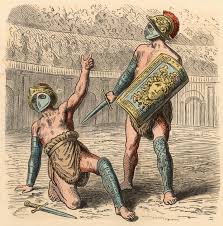
Echoes Beneath the Streets
Walk the streets of York today and you’ll hear nothing but the chatter of tourists and the calls of market traders. But under Driffield Terrace, the ground still holds the echoes of an ancient crowd: the roar of the amphitheatre, the clash of swords, the thud of a blade striking bone.
The men buried there lived short, brutal lives. They fought, they bled, and they died far from home. Their heads severed, their bones hidden, they became part of the city’s foundation.
It’s easy to romanticise gladiators, to see them as tragic heroes. But standing at those graves, all you see are young men cut down, their lives taken for entertainment, their bodies discarded like broken weapons.
The Last Word
Archaeology has a way of dragging the shadows of the past into the light. The headless gladiators of York aren’t just skeletons. They’re reminders. Reminders of the cruelty people are capable of. Reminders that beneath our cities lie layers of pain and blood.
The next time you walk through York, pause a moment. Beneath your feet, not far from the Roman roads, 80 young men lie in graves, their heads hacked from their bodies, their skulls resting silently in the dirt.
They fought. They died. And now they whisper, from the earth itself, of a world that found beauty in blood.

